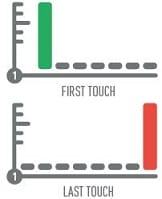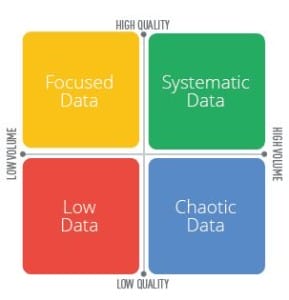
To paraphrase Fiona Roddis: Analytics is about building insights from ALL of your data and outside influences.
What if you could track every step of your buyer’s journey from their initial contact to the sale? With advanced analytics tools and attribution marketing, you can.
What Is Attribution Marketing?
Attribution marketing is the practice of tracking and assigning values to all marketing “touch points” along the conversion path that lead to a target outcome.
Daavi Zain, the founder of Measured Path, showcases the importance of attribution marketing using a real-life example:
“How many times have you put a spot on TV or launched a display campaign, only to find that sometime later you saw a surge of people coming from your SEM (search engine marketing) campaigns in Google and making a purchase? Ever feel like SEM was getting the credit when the other channels did the heavy lifting? Well, that’s an example of what attribution seeks to answer.”
Assessing the value each touch point contributes to conversions empowers you to fine-tune your marketing strategy for optimal ROI.
As savvy marketers like you adapt to shifts in consumer buying behavior, implementing data attribution is no longer an option. The challenge is choosing a solution that fits your budget and provides accurate information to inform your marketing team.
Let’s take a look at the two approaches to assigning touch-point values: rules-based attribution and data-driven attribution.
Rules-based Attribution Models
Rules-based marketing attribution is the “simple attribution” approach. These models assign values to each touch point according to a predefined formula. The section below summarizes commonly used rules-based attribution models.
Single-touch Attribution assigns 100% credit to only one touch point, usually the first or last one.

Even Attribution (Linear) assigns equal credit to each touch point. (For example, if there are five touch points, the model allocates 20 %. attribution credit to each.)

Custom attribution assigns arbitrary credit to each touch point. In simple attribution, the first touch point is the “introducer,” intermediate touch points are “promoters” and the last point is the “closer.” Most custom attribution models assign higher values to the “introducer” and “closer.”

Simple, rules-based attribution provides only rudimentary insights about your multi-channel marketing mix. In most cases it is too simplistic to guide your marketing mix strategy.
Data-driven Attribution Models
Data-driven attribution, also called, “algorithmic” attribution, is a scientific approach that provides accurate insights.
Data-driven attribution combines predictive algorithms with integrated analytics to credit every touch point correctly on the conversion path.
Data-driven attribution is a comprehensive model that incorporates the total touch points, touch-point order, and search keywords.
The results identify the least, intermediate and most influential touchpoints on various levels based on actual customer behavior and in-depth conversion-path comparisons.
Algorithmic attribution enables you to measure accurately and accumulatively the most relevant KPIs (key performance indicators) for highly integrated cross-channel campaigns including sales, profit, ROI and custom metrics.
Advanced data-driven attribution solutions track every unique customer path sequence and exposure pattern, utilizing a nested logistic regression to measure relative revenue contributions for each marketing component.
The downside to data-driven attribution is that implementation is complicated and costly. Furthermore, results can be misleading when data-collection techniques are sloppy.
Data-driven attribution is reliable only when your data is high quality. It must be “focused data” or “systematic data” as represented by the yellow or green rectangles in the graphic below.
Diagram Source: eBook “The Definitive Guide to Data-Driven Attribution” –Adometry.
The following infographic illustrates the percentage of marketers applying both models and the challenges they encounter with attribution marketing techniques.
Key Takeaways And Recommendations
As shown above, only 11% of surveyed marketers used advanced algorithmic attribution, while 35% favored rules-based attribution and 23% measured only first or last touch points.
Another noteworthy point revealed by the above Infographic is that 33% of the surveyed marketers face challenges in: “Knowing how to leverage results to generate new insights and actions.”
To select a suitable attribution method for your business, consider your budget and your business objectives. The ideal solution will integrate with your existing analytics framework.
As you allocate a portion of your marketing budget to analytics and attribution, keep in mind that data volume alone will not enhance your marketing strategy. You’ll need sharp minds to analyze the data.
Indeed, analytics consultant, Jeff Sauer, recommends that: “For every $20 you spend on web analytics tools, you should spend $80 on the brains to make sense of the data.”
Based on the above insights, which attribution model is most suited for your current business objectives?
What topics would you recommend that we address in future posts?
We look forward to your comments.
To your success!
Images courtesy of [cooldesign] at FreeDigitalPhotos.net



